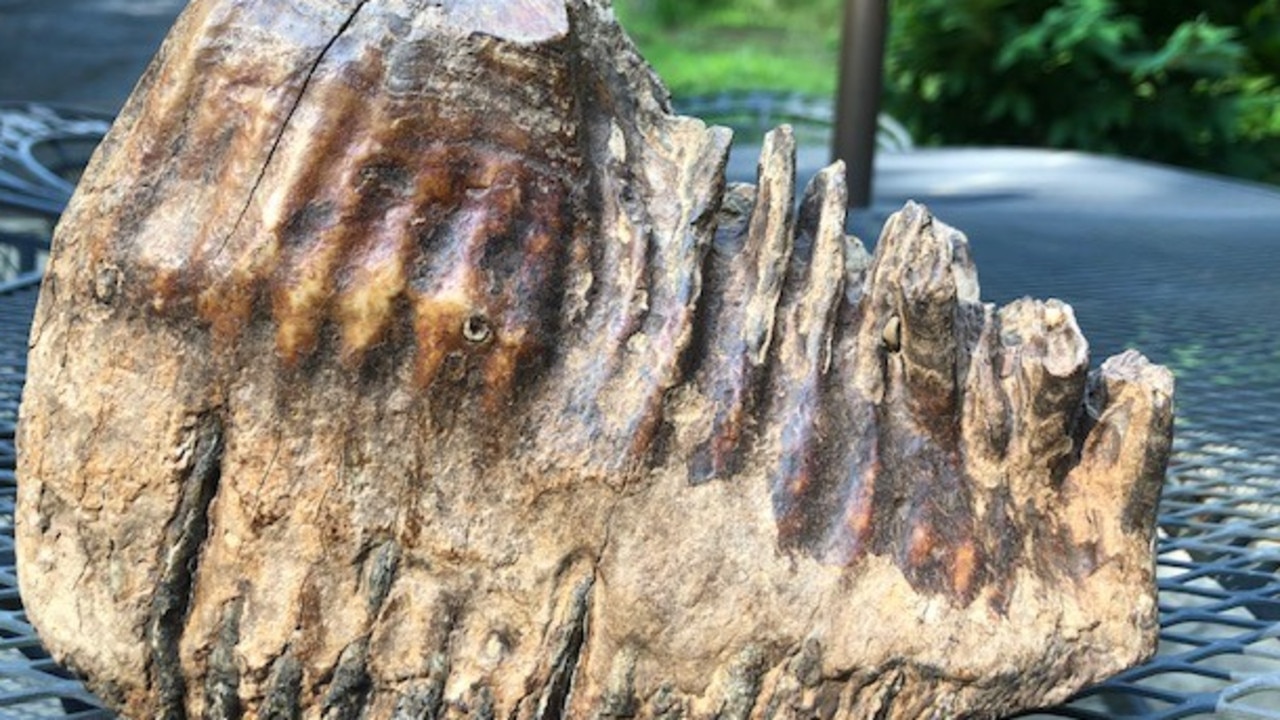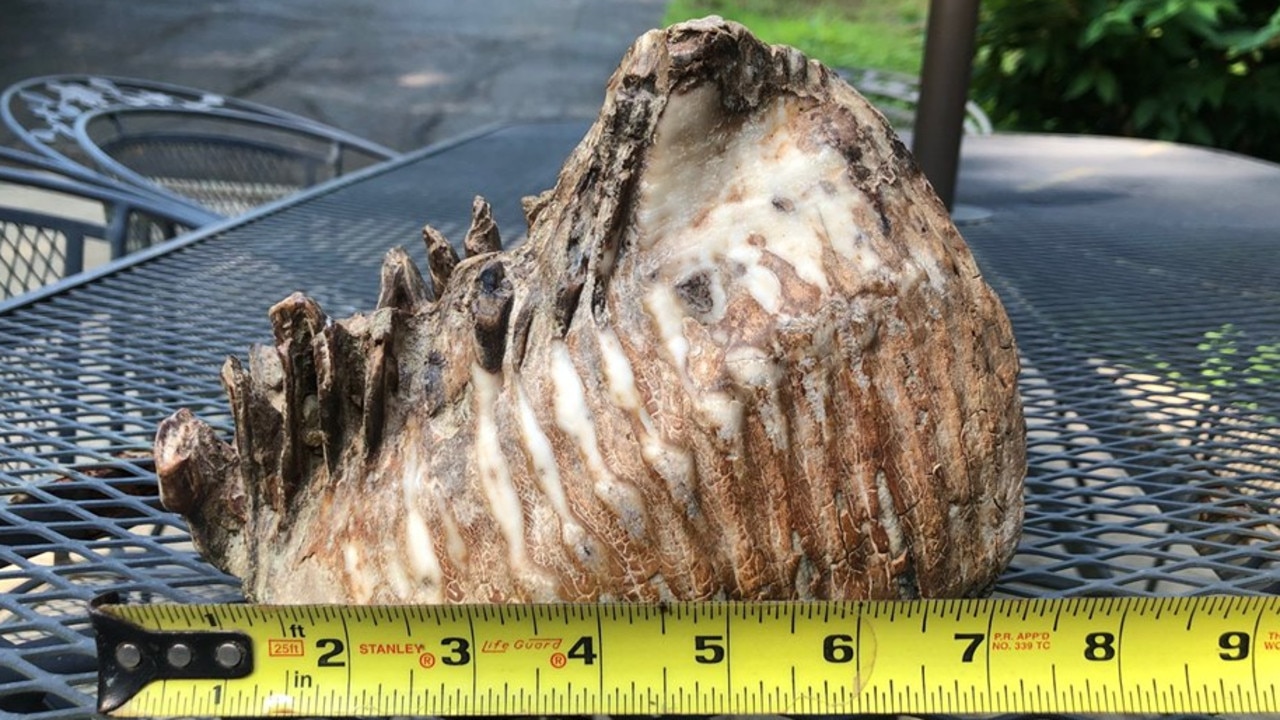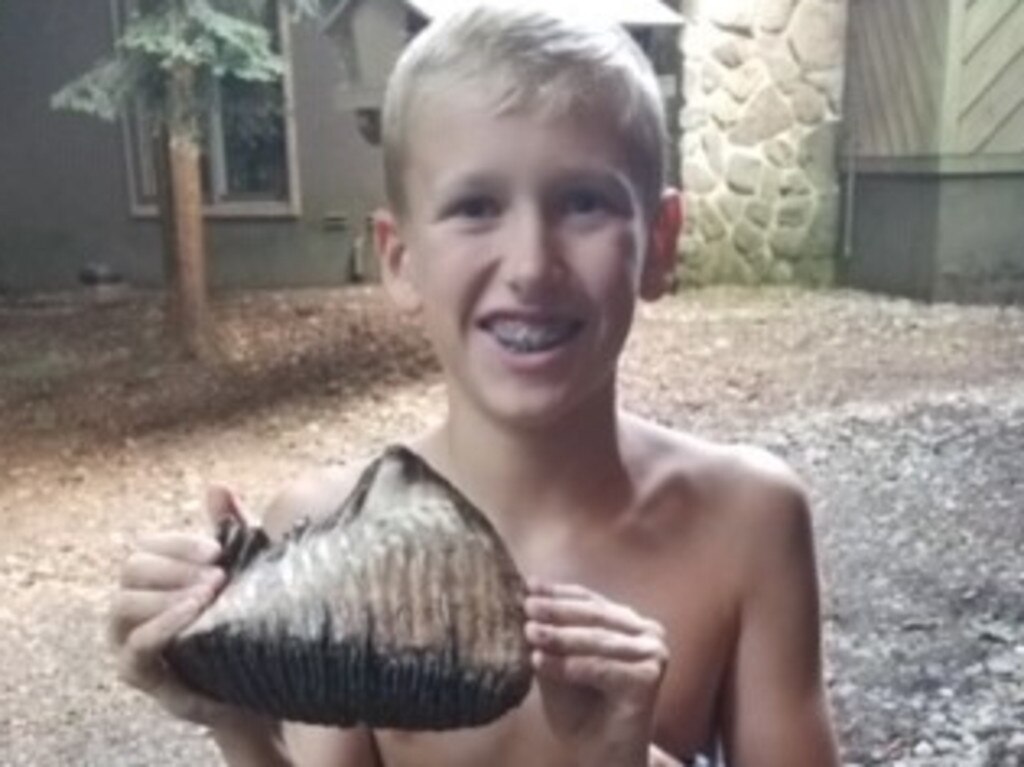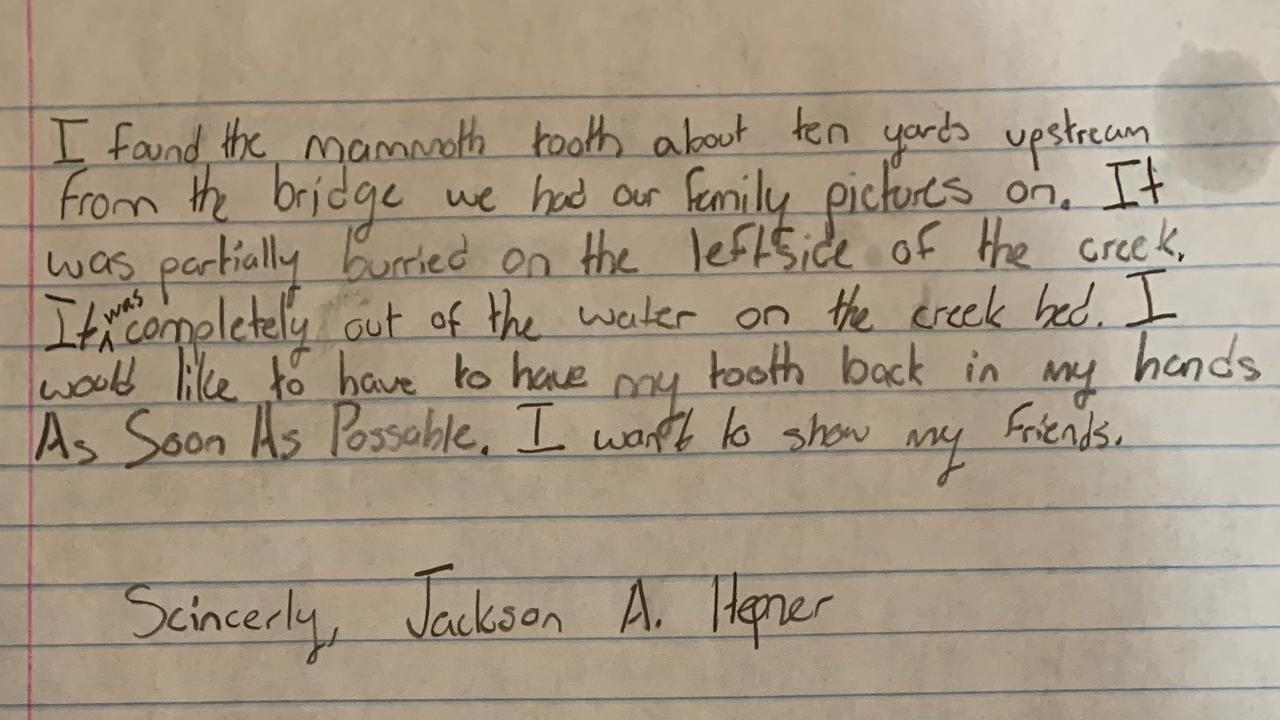Woolly mammoth tooth discovered in creek by 12-year-old boy
A young boy on holiday with his family has made a stunning find while exploring a creek bed on the grounds of the resort.

A 12-year-old boy has made a stunning discovery in a creek bed while on holidays at a resort in northeastern Ohio.
While staying near Honey Run Creek, Jackson discovered a the object on the grounds of the resort during a photo shoot.
In a blog post, the resort explained that during a break in the photo shoot, Jackson Hepner spotted something sticking out of a creek on the Inn’s grounds.
“Twelve-year-old Jackson spotted the tooth near Honey Run Creek during a family reunion photo shoot,” the Inn at Honey Run posted on Facebook.
“It’s been verified by several scholars as an upper 3rd molar of a Woolly Mammoth!”

“I found the mammoth tooth about ten yards upstream from the bridge we had our family pictures on,” Hepner wrote, in an account of the discovery. “It was partially buried on the left side of the creek. It was completely out of the water on the creek bed.”
Experts have confirmed that the tooth is from a woolly mammoth.
“Teeth of Woolly Mammoths are distinguished by parallel ridges, which the animals used to grind grass and seeds,” the Inn explains.
“We couldn’t be prouder to be the site of such an extraordinary find and unforgettable experience!”

Woolly mammoths became extinct more than 4000 years ago.
In 2012, a nearly complete skeleton of a woolly mammoth was unearthed in France, much to the delight of archaeologists. Woolly mammoth finds, however, are more common in Siberia, where frozen remains have been discovered on a number of occasions.
The unearthing of well-preserved woolly mammoth remains and advances in genetic research have fuelled discussion that the long-extinct beasts could be cloned.
However, the ethics of scientists bringing about the possible “de-extinction” of a species have been hotly debated, with critics saying that resources would be better spent on existing animals.

In 2017, a 10-year-old in New Mexico stumbled on a million-year-old fossil thought to be a Stegomastodon skull. The following year, three boys in Mississippi dug up a mastodon fossil believed to be almost 100,000 years old.
This article originally appeared on Fox News and was reproduced with permission



